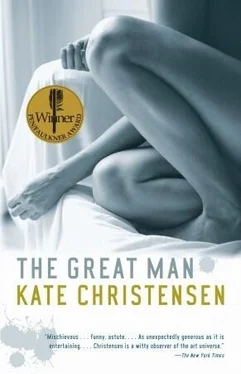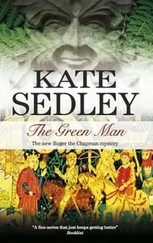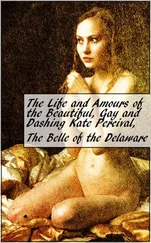“What do you mean?”
“I mean, I suppose, aesthetically.”
“Aesthetically,” Paula repeated in a teasing voice. “I don’t know about aesthetically, but essentially it’s just one statement, part of an ongoing dialogue. Conceptually, it’s about shifting the paradigms while engaging in the act of replicating something real and making it as lifelike as possible, to scale, in an artistic context. And thematically, it’s about the African American matriarchy. I’m dialoguing in mainstream, accessible terms about an underrepresented sector, giving a voice to the voiceless and, in the process, playing with the traditional power structures of representation. To put it colloquially, in black culture, women are the ones who step up. Sure, black teenage girls are having babies, but the family raises them together, grandmothers, aunts, cousins. Black men are off in prison or on the streets and the women are holding everything together with faith and discipline and courage.”
“Yes, I see that,” said Maxine. “What I don’t see is how life-size subway benches or fast-food booths can be considered art in the same way as a Kandinsky painting or a Rodin sculpture.”
“That’s partly the point,” said Paula. She sounded as if she were congratulating Maxine. “The African American family structure is, of necessity, self-invented and free-form in the same way African American art has to be. We have to make it up. We have to invent. We have to use what we’ve got, which is nothing. Our own lineage was broken by slavery. Our heritage was lost. Our families were divided and separated again and again — out of existence. African American art is pure American energy, tapped into something positive instead of the negativity of gangland killings and crime and unwed motherhood and drugs. It’s the flip side, the bright side of ghetto darkness. You could say that we have to write our own song, and we are singing it any way we can.”
“Beautifully put,” said John softly.
“And, all due respect,” Paula added with a glint of fight in her eye, “but you haven’t seen these replicas. Radically different subject matter aside, they are solidly part of tradition, if you want to get into that. I’m dialoguing with Ed Keinholz, of course, and Red Grooms…Duane Hanson and H. C. Westerman…. And just because they were white men and I’m a black woman doesn’t mean it’s any less valid as art, Maxine. You, as a woman artist, ought to know that as well as anyone.”
“Bravo,” Jane said, tapping her fingers together in miniature applause.
Maxine opened her mouth to ask Paula how she could possibly consider herself an African American descended from slavery when her mother was of French descent and her father was from Algeria and she’d grown up in the suburbs and gone to Bennington.
Instead, she said, “I have done my best to avoid becoming familiar with conceptual art. It seems like a lot of clever, cold hoo-ha to me. As for so-called dialoguing — if that is really a verb — I have no idea what that means. I paint out of direct experience, and I’m not talking to anyone when I work, least of all to myself. I have to get everyone out of my head, including my own voice, in order to be able to paint. Please excuse me if the answer is obvious and the question is retarded, but what the hell ever happened to truth and beauty?”
The whole table erupted into conversation all at once.
“So is it really art ?” said Saul Unger softly in Maxine’s ear. “That’s the question. It should be called something else, because it is something else.”
Maxine looked over at him, surprised to have an ally at the table after all.
“Really,” Saul said stubbornly. “The same way Scientology is not a religion, this is not art. Yom Kippur is not easy. Kandinsky is not easy.”
Suddenly, another plate appeared in front of Maxine, this one containing two grilled lamb chops, boiled new red potatoes, chickpea-mint salad, and steamed baby squash. The chickpeas looked like round infant heads with cowlicks. So whoever was masterminding this dinner was attempting nothing less than the re-creation of the history of evolution, from primordial soup to water babies to land babies. She supposed there would be meringue chicks in baklava nests for dessert. She could imagine the cook back there, his breast simultaneously puffed with pride and racked with despair: No one would understand his brilliant work, no one would apprehend its true meaning, and then it would be gone.
“Speaking of aesthetics,” she said jovially across the table to Michael, indicating her plate. “This is like the upscale version of The Discreet Charm of the Bourgeoisie. ”
Michael responded with an impatient, tight look Maxine felt was meant to function as a slap. She surmised in a flash that she had committed a double faux pas. Apparently, you weren’t supposed to question Paula’s artistic merit; rather, you were supposed to say, “This dinner is amazing. Who is your chef?” instead of comparing it to a Buñuel film. But why the fuck not? It made no sense, any of it. In the old days, the painters at such a party could well have been pissing in corners, drunk as bums, arguing so hard that they spat at one another. She missed her brother with a sharp pain in her chest; she thought for a moment that she was having a heart attack until she realized that it was just nostalgia.
The brush was moving on the canvas as if it had volition, liveliness, as if it were made of nerve endings and electrical impulses instead of dead wood and hair, or as if it were a dog or a badger, something instinctive, intent on prey. It leapt over the surface and left tracks, deposited a trail of feathery flakes, then a smudge, as if the wind had smeared it. The tracks ended before the entire bare right side of the canvas. It looked as if the creature had become airborne and lifted off.
Ashes and Dust, Maxine had named this series. She stood back to look at what she’d done. From this angle, at this remove, it pleased her, but Maxine knew all too well that the eye of the beholder was a fickle thing when the beholder was also the maker. Five minutes from now, from another angle, it would look like shit.
“Ralph Washington will be a little late,” Katerina called from the office area in the back of the loft, which was little more than a desk made of a door on two filing cabinets, with phone and computer on it, stacks of papers, bills to be paid.
“What?” Maxine called. Whenever Katerina was here, she took charge of Maxine’s cell phone, which was a relief, but even so, Maxine hated to be interrupted when she was working, even by Katerina. Being dragged from the world of painting back into the world of life was as difficult as forcing herself from the world of life back into the world of painting. A thick but permeable membrane separated them. Going from one to another required a shape-shifting in the brain. She was never entirely safely ensconced in either world; the demands of the other one could be heard, muffled from whichever one you were in, so no matter where you were, you felt a tug of anxiety that something might go wrong in the other one in your absence, something you’d failed to account for before you left. It would have been much easier if the transition could have been accomplished through a series of soundproof air locks, decompression chambers. It felt as if there were only room in one lifetime to inhabit one of these parallel worlds, but here she was, trying to cram them both in. Each parallel life sucked the air out of the other one. When she was deep in her painting, she felt how short her time there was and panicked because she would never get to do it all before she died. It only got harder as she got older, harder because, as with sleep, she could never be as fully in either world as she’d been when she was younger. The membrane had become worn and weakened with age, like everything else.
Читать дальше












